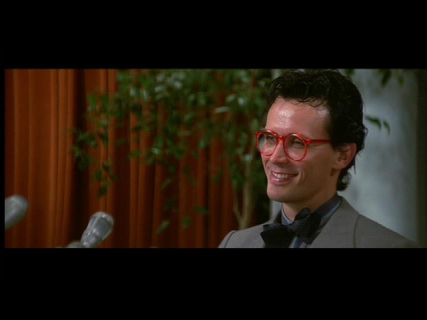Letterbox
When viewing Anamorphic (16:9) video on a 4:3 TV, the image must be squeezed vertically in order to correct the Aspect ratio (AR), which is different than the AR of your TV screen. If you think in terms of square Pixels. For a NTSC TV you'd have a horizontal Resolution of 640 Pixels (480 x 4 / 3). For a 640 pixel wide screen, the center 360 horizontal lines make up the 16:9 area of the display. If your DVD player were to handle this the same way as it would for a 16:9 screen it would look like the image below. Notice that it appears horizontally squeezed. The face is too tall and skinny. Instead, your DVD player will squeeze the video vertically and add borders to the top and bottom, preserving the original AR and compensating for the different screen shape. These borders are known as a Letterbox.

Above is the Frame displayed with its original height, as stored on an Anamorphic (Widescreen) DVD. Below is the same Frame, squeezed vertically to maintain proper Display Aspect Ratio (DAR). Click on either image to see a larger version.

Letterbox borders are also used to Encode Widescreen images to a 4:3 video frame for DVD. If the example frames above were from a DVD encoded Fullscreen, rather than widescreen, the original frame would look like the bottom image with the correct AR for a 4:3 TV used.
Related Guides
Resizing DVD-Video To Square Pixels
Digital Video Fundamentals - Resolution and Aspect Ratio
Related Hardware
16:9 HDTVs

